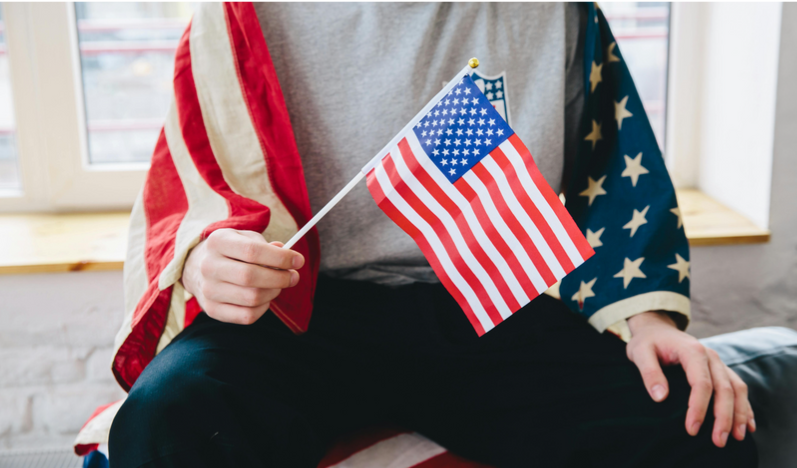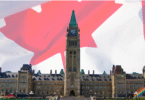Are you dreaming of visiting the United States? Maybe to see famous places like New York, Los Angeles, or even to study, work, or visit family? Whatever your reason is, you will probably need an American visa before you can enter the country.
Applying for a US visa might seem confusing at first, but don’t worry! In this article, I will guide you step-by-step on how to apply for an American visa in the easiest way possible. You will learn the different types of visas, what documents you need, how to fill out the application, and how to prepare for your visa interview.
By the end, you will feel more confident and ready to start your visa application journey.
What is an American Visa?
An American visa is an official stamp or document placed in your passport that allows you to travel to the United States. It means the U.S. government has given you permission to visit the country for a specific reason and for a limited period of time.
There are different types of American visas depending on your purpose. For example, you may need a visa to visit for tourism, study, work, or to live permanently. Having a visa does not guarantee you will enter the U.S., but it allows you to travel to a U.S. port of entry (like an airport), where an immigration officer decides if you can enter.
In short, an American visa is your official permission to travel to the United States for a purpose like visiting, studying, working, or joining family.
Types of American Visas
When you want to visit the United States, it’s important to understand the two main categories of American visas. These categories depend on whether you want to stay for a short time or live in the US permanently.
1. Non-Immigrant Visas (Temporary Stay)
Non-immigrant visas are for people who want to visit the US for a limited time. This could be for tourism, business, study, or temporary work. These visas do not allow you to live permanently in the United States.
Some common types of non-immigrant visas include:
- B-1 Visa (Business Visitor): For people traveling to the US for business meetings, conferences, or contract negotiations. You cannot work or earn money in the US with this visa.
- B-2 Visa (Tourist Visitor): For tourists visiting the US for vacation, to see family, or to get medical treatment. Typically, it allows stays up to six months.
- F-1 Visa (Student Visa): For students enrolled full-time in a US school, college, or university.
- J-1 Visa (Exchange Visitor): For people in exchange programs, internships, training, or cultural exchange. Usually requires you to return home after the program.
- H-1B Visa (Specialty Occupations): For workers in specialized jobs requiring a college degree or special skills. Allows temporary work for a US employer.
- L-1 Visa (Intra-company Transfer): For employees transferred within a company from a foreign office to a US office.
- O-1 Visa (Extraordinary Ability): For individuals with exceptional talent or achievements in fields like science, arts, education, or business.
There are more types, but these are the most commonly used for temporary stays.
2. Immigrant Visas (Permanent Stay)
Immigrant visas are for people who want to live in the US permanently. When you get an immigrant visa, you usually become a “lawful permanent resident” or green card holder.
Some common immigrant visa types include:
- Family-Based Immigrant Visas: For close family members of US citizens or permanent residents, such as spouses, children, parents, or siblings.
- Employment-Based Immigrant Visas: For people sponsored by a US employer to live and work permanently.
- Diversity Visa (DV) Lottery: A special lottery program that offers visas to people from countries with low immigration rates to the US.
- Refugee and Asylee Visas: For people escaping danger or persecution who are allowed to settle permanently.
- Investor Visa (EB-5): For individuals investing significant money into a US business to create jobs.
Immigrant visas involve a longer process but give you the chance to live permanently in the United States.
In short: Non-immigrant visas are for short visits like tourism, study, or work, while immigrant visas are for those who want to live permanently in the US.
Knowing which type of visa you need is an important first step in your application.
How to Apply for an American Visa: Step-by-Step Guide
Applying for a US visa can feel overwhelming, but if you follow these steps carefully, it will become much easier.
Step 1: Determine the Type of Visa You Need
The first step is to decide which visa category fits your purpose of travel.
- Are you visiting for a short time like tourism, study, or business? Then you need a Non-immigrant visa.
- Do you want to live permanently in the US? Then apply for an Immigrant visa.
Knowing this helps you avoid mistakes and prepares you for the right application process.
Step 2: Complete the Online Visa Application Form (DS-160 or DS-260)
For most non-immigrant visas, you will fill out the DS-160 form online. If you are applying for an immigrant visa, you will use the DS-260 form.
- The DS-160 form asks for your personal information, travel plans, and background.
- Be honest and careful when filling the form. Mistakes can delay or harm your chances.
- After submission, you will get a confirmation page with a barcode. Print and keep this for your records and interview.
Step 3: Pay the Visa Application Fee
You must pay the visa application fee to move forward. The fee depends on your visa type and country, but it usually ranges from $160 to $265 for non-immigrant visas.
- Keep your payment receipt because you will need it for your interview.
- Some visa types have additional fees, so check the US embassy or consulate website in your country for exact costs.
Step 4: Schedule Your Visa Interview Appointment
After paying the fee, you must schedule an appointment at the nearest US Embassy or Consulate.
- Visit the embassy’s website or use the official US Department of State website to book your interview.
- Choose a convenient date and time, but try to schedule early, as slots can fill up quickly.
- You will need your DS-160 or DS-260 confirmation number and payment receipt to book the interview.
Step 5: Gather All Required Documents
Before your interview, gather all the necessary documents. These usually include:
- Your valid passport (must be valid for at least six months beyond your planned stay).
- The DS-160 or DS-260 confirmation page.
- Visa fee payment receipt.
- Appointment confirmation letter.
- A recent passport-sized photo (meeting US visa photo rules).
- Supporting documents depending on visa type (e.g., proof of financial support, school acceptance letter, job offer letter, or family relationship documents).
Check the embassy website for a complete list tailored to your visa type.
Step 6: Attend Your Visa Interview
The visa interview is a key part of the process.
- Dress neatly and arrive early.
- Bring all your documents.
- Answer questions clearly and honestly. The officer wants to understand your purpose of travel and ties to your home country.
- Stay calm. The interview may last a few minutes to half an hour.
- Some applicants may be approved right away; others might need extra processing.
Step 7: Wait for Your Visa Decision and Passport Return
After the interview, the consular officer will tell you if your visa is approved or denied.
- If approved, your passport with the visa stamp will be returned to you in a few days or weeks, depending on your country.
- If denied, you will be told the reason and your options.
- Sometimes, additional documents or administrative processing may delay the decision.
Step 8: Plan Your Travel to the United States
Once you get your visa, make your travel plans.
- Remember, a visa does not guarantee entry. The US Customs and Border Protection officers at the port of entry will decide if you can enter.
- Have your passport, visa, and other travel documents ready for inspection.
- Follow all US laws and visa rules during your stay.
Documents You Need to Prepare for Your American Visa Application
One of the most important parts of applying for a US visa is preparing the right documents. Having all the correct papers ready will make your application and interview easier and faster.
1. Valid Passport
- Your passport must be valid for at least six months beyond your planned stay in the United States.
- It should have at least one blank page for the visa stamp.
- If you don’t have a passport yet, apply for one as soon as possible because you will need it for your visa application.
-
Confirmation Page of DS-160 or DS-260 Form
- After filling out your online visa application (DS-160 for non-immigrant, DS-260 for immigrant visas), you will get a confirmation page with a barcode.
- Print this page and bring it to your visa interview. It proves you completed the online form.
-
Visa Application Fee Payment Receipt
- Keep the receipt of your visa fee payment.
- You will be asked to show proof that you paid the visa application fee when you go for your interview.
-
Passport-Sized Photograph
- Most US visas require a recent passport photo that meets strict US visa photo requirements.
- The photo should be in color, 2×2 inches (51×51 mm), taken within the last six months.
- Check the US embassy website in your country for specific photo rules.
-
Supporting Documents Based on Visa Type
This is where your visa type matters most. Below are common examples:
- For Tourist (B-2) and Business (B-1) Visas:
- Proof of ties to your home country (like a job, family, or property) showing you will return.
- Travel itinerary or invitation letter from a US host (if any).
- Bank statements to prove you can afford your stay.
- For Student Visas (F-1):
- Form I-20 from your US school or university.
- Proof of funds to cover tuition and living expenses.
- Transcripts or academic records.
- For Work Visas (H-1B, L-1, O-1):
- Job offer letter from your US employer.
- Labor certification or petition approval from US Citizenship and Immigration Services (USCIS).
- Proof of your qualifications, like degrees and experience letters.
- For Immigrant Visas:
- Affidavit of Support from your US sponsor (form I-864).
- Civil documents like birth certificate, marriage certificate, police clearance certificates.
- Medical examination report from an approved doctor.
-
Additional Documents (If Required)
Sometimes, the consular officer may ask for extra documents. These could include:
- Police certificates or background checks.
- Medical exam results.
- Proof of military service.
- Evidence of previous US visas or travel history.
Tips for Organizing Your Documents:
- Always keep your documents neat and organized.
- Use a folder or envelope to carry all your papers safely.
- Bring original documents and copies just in case.
- Make sure all documents are translated into English if they are in another language.
Tips for Preparing for Your Visa Interview
Your visa interview is your chance to show that you’re genuine and ready to follow the visa rules. These simple tips can help you prepare and feel more confident.
-
Know Why You’re Going
Be clear about your travel purpose. Whether it’s for tourism, work, study, or family, know exactly why you’re going to the US and how long you plan to stay.
-
Be Honest and Clear
Always tell the truth. Keep your answers short and clear. If you don’t know something, it’s okay to say so politely.
-
Practice Common Questions
You may be asked:
- Why are you going to the US?
- How long will you stay?
- Who is paying for the trip?
- What do you do at home?
Practice answering these questions in simple English.
-
Dress Neatly and Be On Time
Wear clean, smart clothes. First impressions matter. Arrive at the embassy early so you’re not rushed or stressed.
-
Bring the Right Documents
Make sure you have all your papers ready, including your passport, application form, and any supporting documents. Organize them well.
-
Stay Calm and Polite
It’s normal to feel nervous. Stay calm, listen carefully, and answer respectfully. If you don’t understand something, ask them to repeat it.
-
Show You’ll Return Home
The officer wants to see that you’ll go back to your country. Bring proof like a job, family, school, or property that shows you have strong ties to home.
By following these simple tips, you’ll be ready for your interview and increase your chances of getting your visa approved.
Frequently Asked Questions (FAQs)
1. How long does it take to get a US visa?
It depends on the type of visa and your country. Some people get their visa in a few days, while others wait weeks. Check the US embassy website in your country for current processing times.
-
Can I apply for a US visa without a job?
Yes, but you must prove you can afford your trip and that you will return to your country. Showing strong family or personal ties can help.
-
What is the DS-160 form?
The DS-160 is the online form for most non-immigrant visas. You must fill it out before booking your interview. After completing it, print the confirmation page.
-
What is the DS-260 form?
The DS-260 is the online form used for immigrant visa applications. If you’re moving to the U.S. permanently, you’ll need to fill this form. After submitting it, print the confirmation page and take it to your visa interview.
-
Is the visa fee refundable if I get denied?
No. The visa fee is non-refundable, even if your application is denied.
-
Do I need to book a flight before the visa is approved?
No. You don’t need to buy a ticket before getting your visa. It’s better to wait until your visa is approved.
-
What if I forget a document during my interview?
If you forget a major document, the officer may delay or deny your visa. Always double-check your documents before going to the embassy.
-
Can I reapply if my visa is denied?
Yes, you can apply again. But it’s best to fix the reason for the first denial before reapplying.
-
Is a visa the same as a green card?
No. A visa allows you to visit or stay for a short time. A green card gives you the right to live and work permanently in the US.
Conclusion
Applying for an American visa might feel like a long and stressful process, but if you follow the right steps, it becomes much easier. From choosing the correct visa type to filling out your DS-160 form or DS-260 form, paying the visa fee, scheduling your interview, and attending it with confidence, every part of the journey matters.
The most important thing is to be honest at every stage of your application. Make sure all your documents are complete and up to date.
So take a deep breath and begin your visa process with confidence. With good preparation and the right mindset, your chances of getting approved are much higher.
Wishing you all the best on your visa journey and safe travels ahead!






